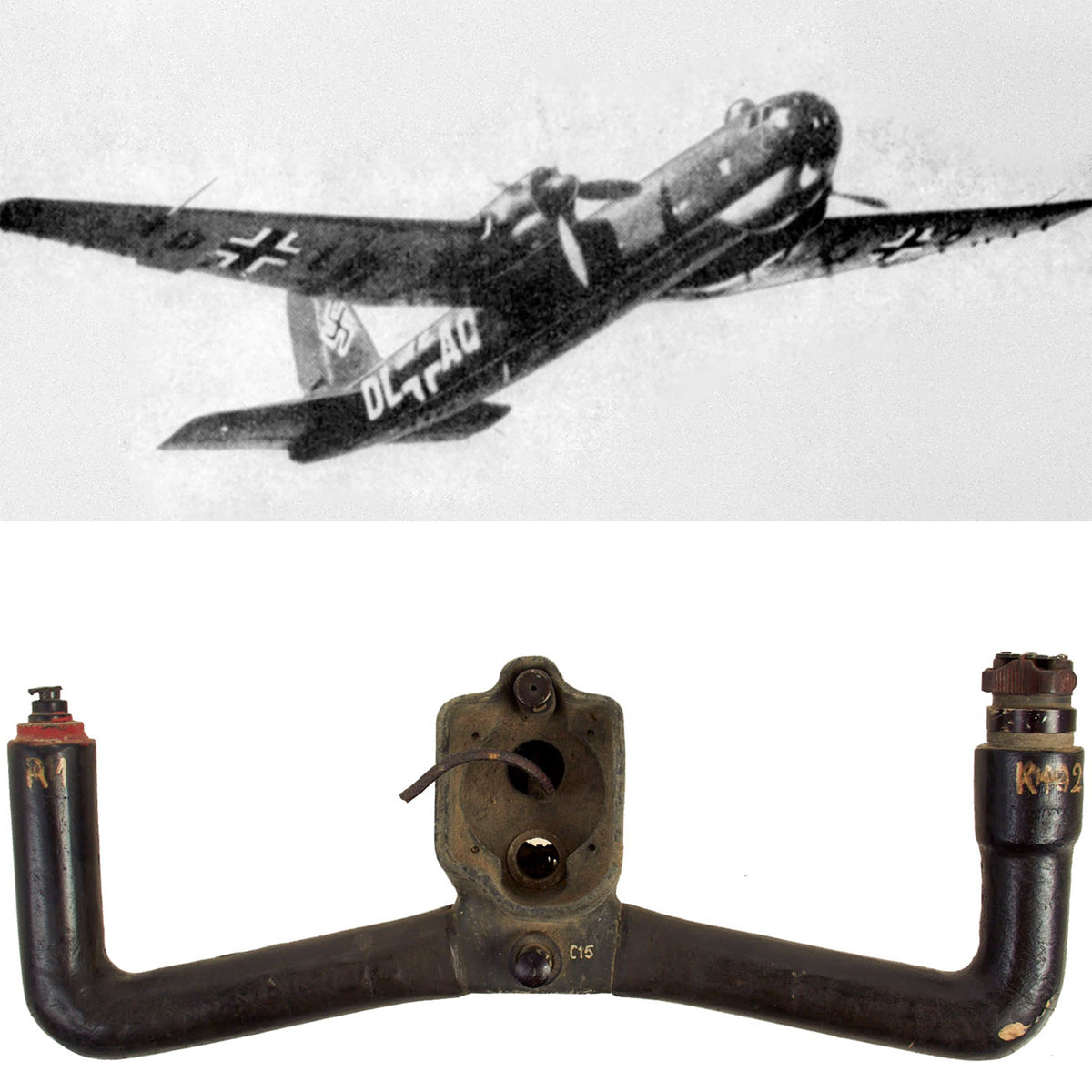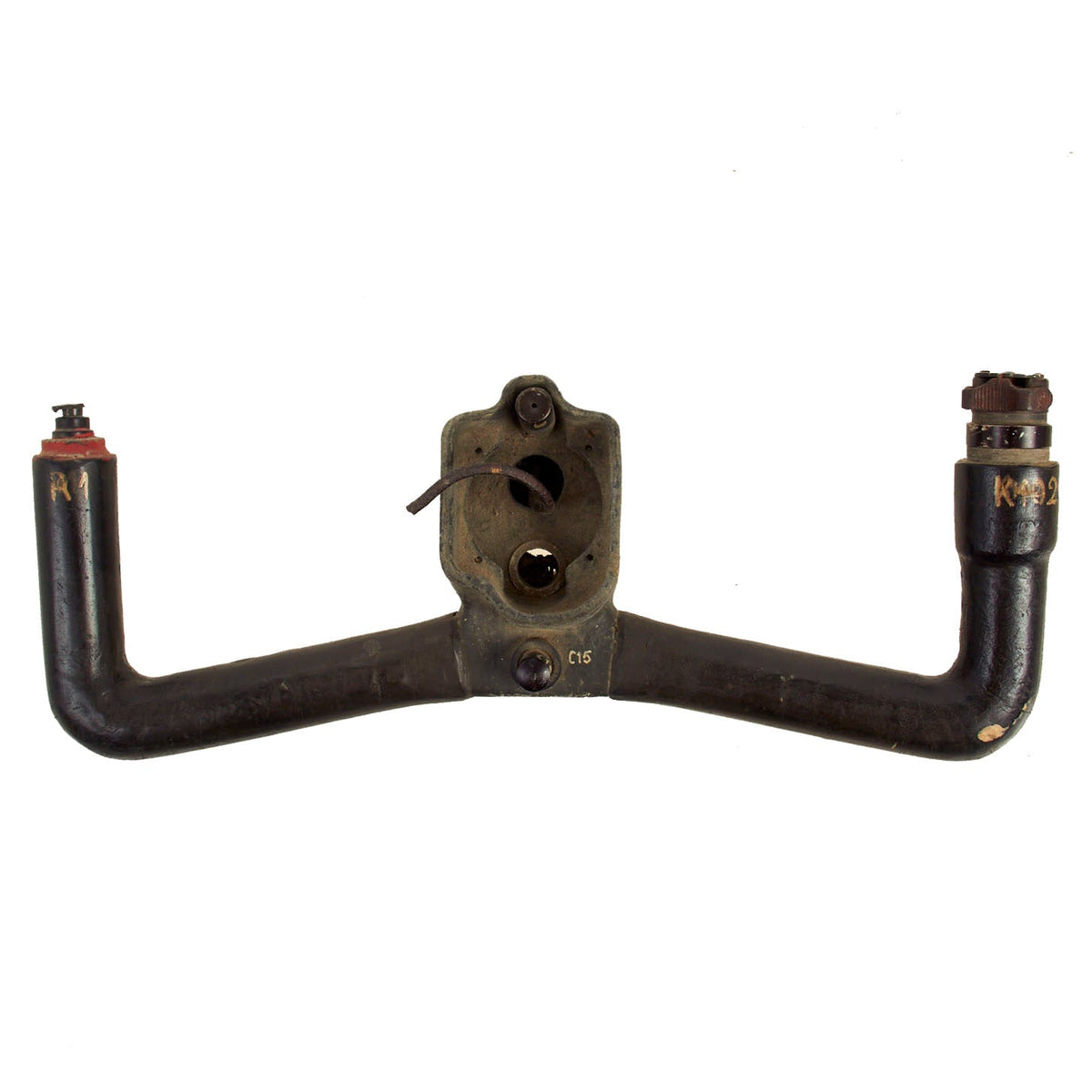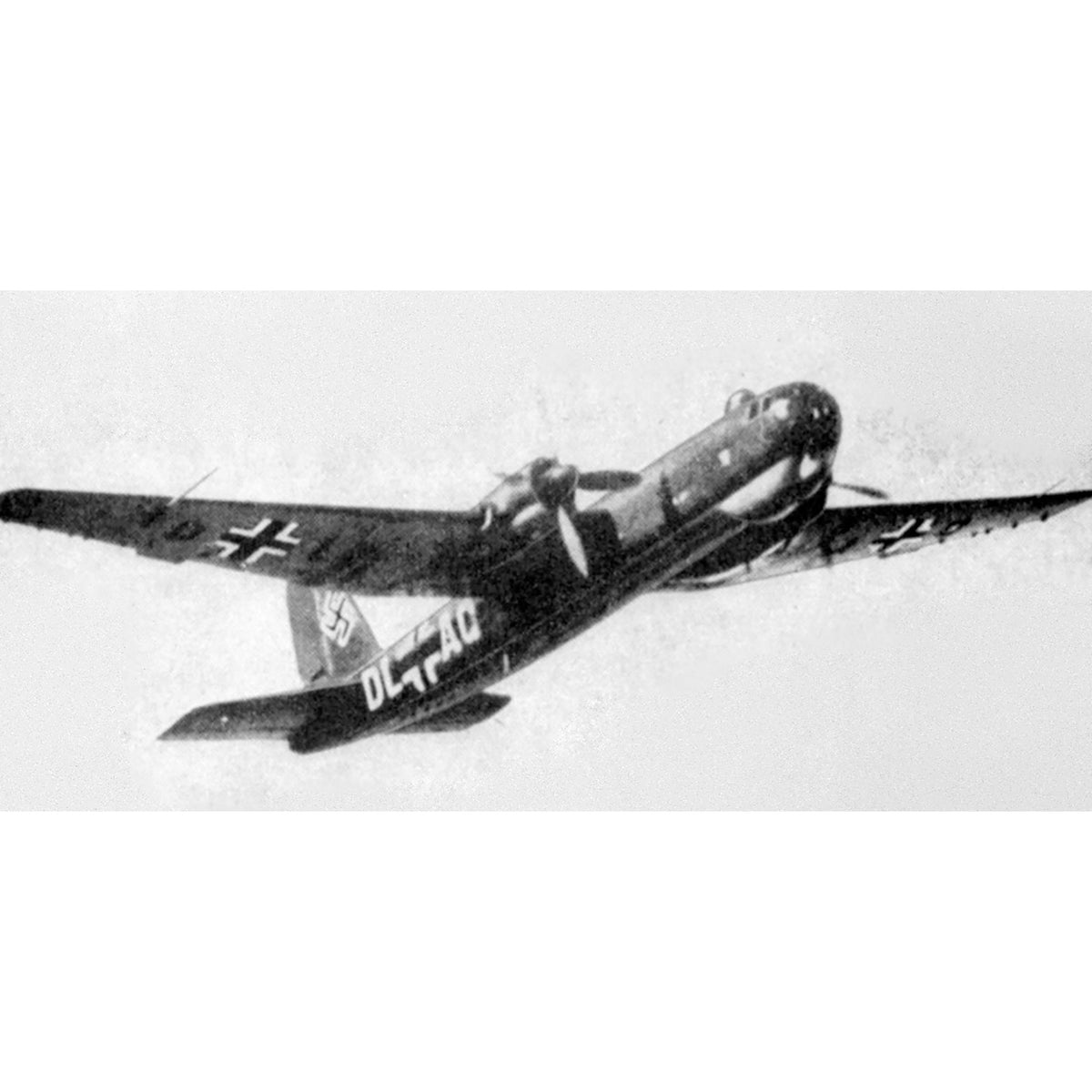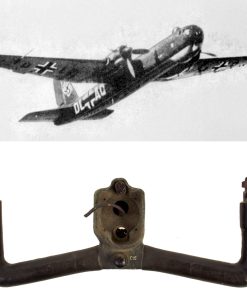Original German WWII Luftwaffe Heinkel HE 177 Greif Heavy Bomber Steering Control Yoke with Siemens Electronics Original Items
$ 2.995,00 $ 748,75
Original Items: Only One Available. This is an actual original Steuerhorn (Steering Horn / Yoke) from probably the only true strategic heavy bomber used by the German Luftwaffe in WWII, the Heinkel He 177 Greif (Griffin)! We had a bit of trouble identifying this yoke, as only 1,169 of these aircraft were ever built! The design was unfortunately revolutionary and well ahead of its time, which led to substantial problems and production delays during the course of development. If you were looking for a rare Luftwaffe control yoke for your collection, this is it!
The yoke itself measures about 16 1/2 inches across, with a height of about 7 inches. The button in the center bottom was made by SIEMENS, and bears Luftwaffe stock number Fl. 32348-2, which is identified simply as a button switch. There is another button on the top of the left side, but the important marking is on the control at the top of the right side. This is marked with the Siemens logo, and Luftwaffe stock number Fl 22567, which is for the Richtungsgeber (Direction Selector) switch part of the autopilot. This same switch was used on other bombers including the Do217, Ju 88, Ju 188, Ju 388, and He 111. The switch has additional markings, but this is the switch that really allowed us to link the yoke to the very rare He 177.
The yoke is in very good service used condition, with the wrapping on the yoke still in good condition. The buttons both still press in and spring back, and the direction control switch still flips back and forth. It is a bit dusty, but we have left that intact to preserve the patina!
A great piece of German Luftwaffe material, ready to add to your collection!
More on the Heinkels He 177:
The Heinkel He 177 Greif (Griffin) was a long-range heavy bomber flown by the Luftwaffe during World War II. The introduction of the He 177 to combat operations was significantly delayed, by both problems with the development of its engines, and frequent changes to its intended role. Nevertheless, it was the only long-range, heavy bomber to become operational with the Luftwaffe during the war. The He 177 had a payload/range capability similar to that of four-engined heavy bombers used by the Allies in the European theatre. Work on the design began in response to a 1936 requirement, known as Bomber A, issued by the RLM for a purely strategic bomber. Thus the He 177 was intended originally to be capable of a sustained bombing campaign against Soviet manufacturing capacity, deep inside Russia.
In contrast to its heavy payload and very wide, 30 metres (98 ft) planform, the specifications called for the design to have only two very powerful engines. To deliver the power required, the He 177 needed engines of at least 2,000 horsepower (1,500 kW). Engines of this type were new and unproven at the time. The Daimler-Benz DB 606 power system that was selected, in conjunction with its relatively cramped nacelles, caused cooling and maintenance problems, such that the powerplants became infamous for catching fire in flight, and contributing to the He 177 gaining nicknames from Luftwaffe aircrew such as Reichsfeuerzeug (“Reich’s lighter”) or Luftwaffenfeuerzeug (“Air Force lighter”).
The type matured into a usable design too late in the war to play an important role. It was built and used in some numbers, especially on the Eastern Front where its range was particularly useful. It is notable for its use in mass raids on Velikiye Luki in 1944, one of the late-war heavy bombing efforts by the Luftwaffe. It saw considerably less use on the Western Front, although it played a role during Operation Steinbock (the “Baby Blitz”), against the UK in 1944.
Fast Shipping with Professional Packaging
Thanks to our longstanding association with UPS FedEx DHL, and other major international carriers, we are able to provide a range of shipping options. Our warehouse staff is expertly trained and will wrap your products according to our exact and precise specifications. Prior to shipping, your goods will be thoroughly examined and securely secured. We ship to thousands clients each day across multiple countries. This shows how we're dedicated to be the largest retailer on the internet. Warehouses and distribution centres can be located throughout Europe as well as the USA.
Note: Orders with more than one item will be assigned a processing date depending on the item.
Before shipping before shipping, we'll conduct a thorough inspection of the items you have ordered. Today, the majority of orders will be delivered within 48 hours. The delivery time will be between 3-7 days.
Returns
The stock is dynamic and we cannot completely manage it because multiple stakeholders are involved, including our factory and warehouse. So the actual stock may alter at any time. It's possible that you may not receive your order once the order has been made.
Our policy is valid for a period of 30 days. If you don't receive the product within 30 days, we are not able to issue a refund or an exchange.
You can only return an item if it is unused and in the same state as the day you received it. You must have the item in its original packaging.
Related products
Uncategorized
Uncategorized
Uncategorized
Uncategorized
Uncategorized
Uncategorized
Uncategorized
Uncategorized
Armoured Fighting Vehicles of the World: AFVs of World War One (Hardcover Book) New Made Items
Uncategorized
Uncategorized
Uncategorized
Angolan Rebel 1970s era 60mm Inert Display Mortar from Angolan Civil War Original Items
Uncategorized
Uncategorized
Uncategorized
Uncategorized
Uncategorized












































































